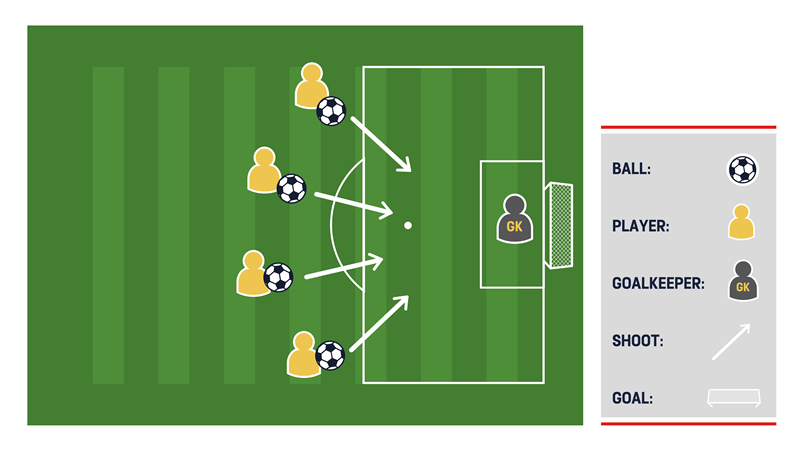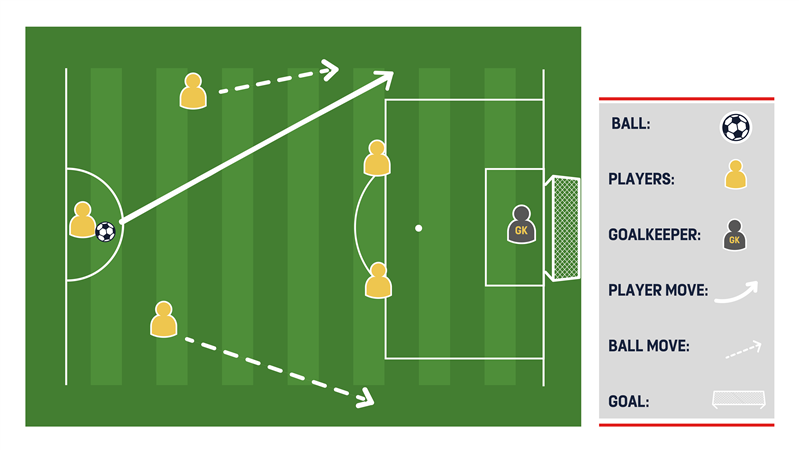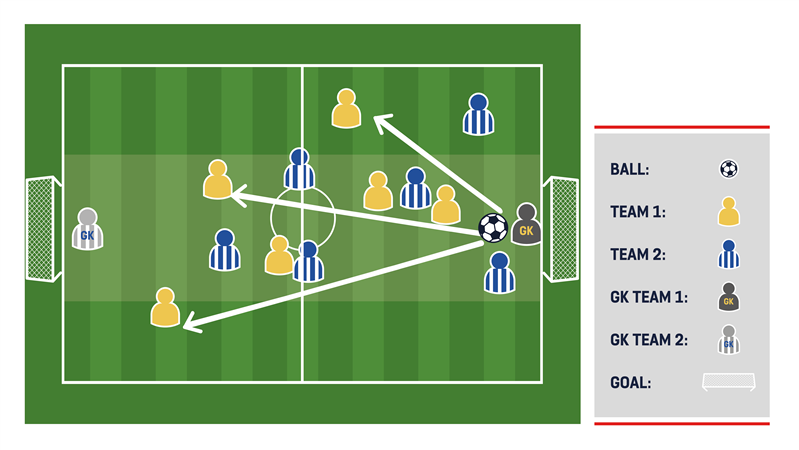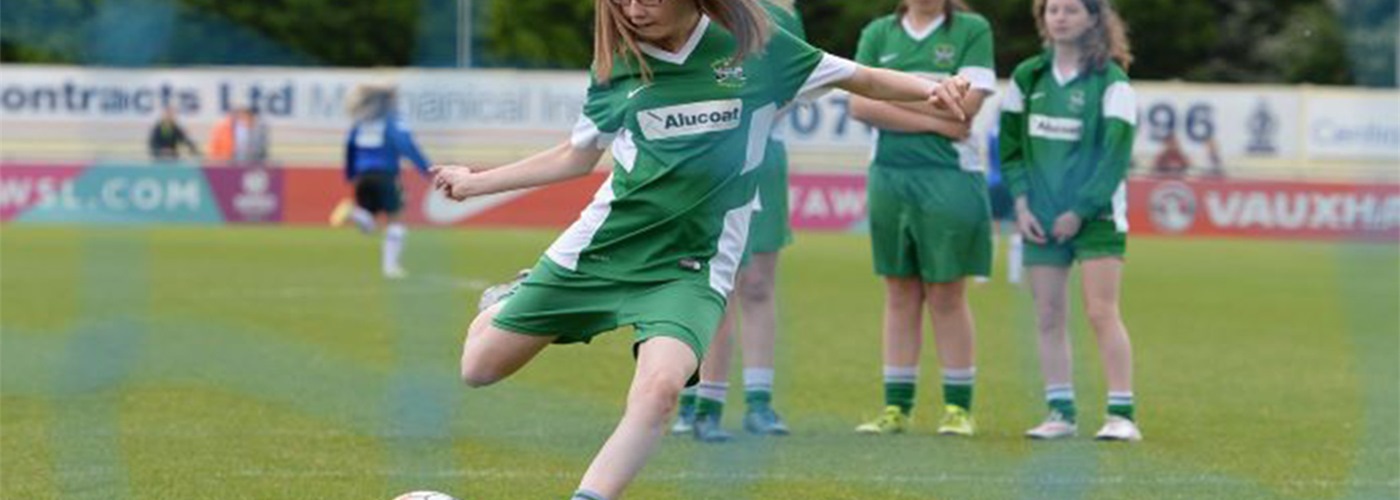In this blog, Pete Augustine, the FA’s coach development officer, discusses finishing and what you should think about when designing a finishing practice.
When we think about finishing, we often think about a goal in and around the six-yard box, from the penalty area, or just outside the box. Quite often in the modern game finishes come from all over the pitch and it is not uncommon to see a goal scored from the halfway line like those scored by Wayne Rooney, David Beckham, and Charlie Adam, to name a few. I'm sure I even remember seeing a goal scored by Cristiano Ronaldo from that sort of range.
Whilst these occurrences are still quite rare, we must be open-minded when it comes to finishing.
For me, the art of finishing is something that must be practiced. We spend a lot of time in our training sessions doing practices that lead up to the goal but never end in a goal. So, if we want our players to be better at finishing, we need to look at how often we practice finishing in training.
I often see practices where the coach separates the strikers from the group and gets them to shoot at an empty net or mannequins. This is ok and may help players to hit a target however a goal is normally scored past a goalkeeper and/or whilst the player is under some pressure.
The amount of space that the striker has is also important. Often the striker will have to operate in tight spaces with players around them. So, what does this mean for practise? Well, it would certainly be worth trying to create a practise that emulates elements of the game. So, for example, having obstacles in the way, even players, or you could create game-like challenges or timed games.
Finishing is also about confidence, so we need to think about how we build confidence in players to want to take shots at goal. Also, how often do we ask our strikers what they see when they're in front of goal? If they miss a chance, do we ask them why they missed? What was it about that chance that caused them to miss? Do we ask them what kind of practices might help them be better when in front of goal? Can we use them to help us design practices that are meaningful and worthwhile?
Check out the example practices below that could be used.

Figure one - each player has a ball. They are stationed at various points around the penalty box. One at a time they take shots at the goal. If they miss they go and collect their ball. If they score or the keeper saves the ball their ball is returned to them.
This might be a typical practice used for finishing but is this finishing? Is this something that bears a resemblance to the game the players will play in? Some might say it will help the players gain confidence shooting from distance and it is something they would do if left to their own devices.
or what about this one...

Figure two - three players in the centre of the pitch, two players on the edge of the box. The central player plays the ball to a player on either side of them who must get to a wide area where they deliver a cross for the two forwards to try to score. The two forwards must ensure they time their run to meet the ball as it is crossed. The goalkeeper can catch any wayward crosses.
This is another common practice. Again, the same questions apply as above, and as with all practices, there is always something to be gained. We must know what that gain is, it is important to know what the players got out of the practice.
Another practice could be...

Figure three - small area, but practice length of the pitch is dependent on the age of the players. It must be long enough to encourage the players to shoot from any distance. The GK starts the practice and can throw the ball to any free player. If the ball goes to a wide player they can either shoot or cross.
More chaos more players, is this what finishing looks like? Whatever method is used we must ensure suitability for the players.
Other questions we need to consider when designing a finishing practice are:
- How old are the players?
- What can they cope with?
- What are their technical capabilities?
- Will it be fun?
Strikers will often say they enjoy scoring, so these practices should be enjoyable.
So, in summary, try to include an element of finishing in your practices. Then see if there can be elements of the game when designing your finishing practices. Know the capabilities of your players and what aspects of finishing they need to improve.
What do you think of Pete’s blog? Do you have any examples of how you develop finishing with your players? How do you make them game-like? Let us know below.


